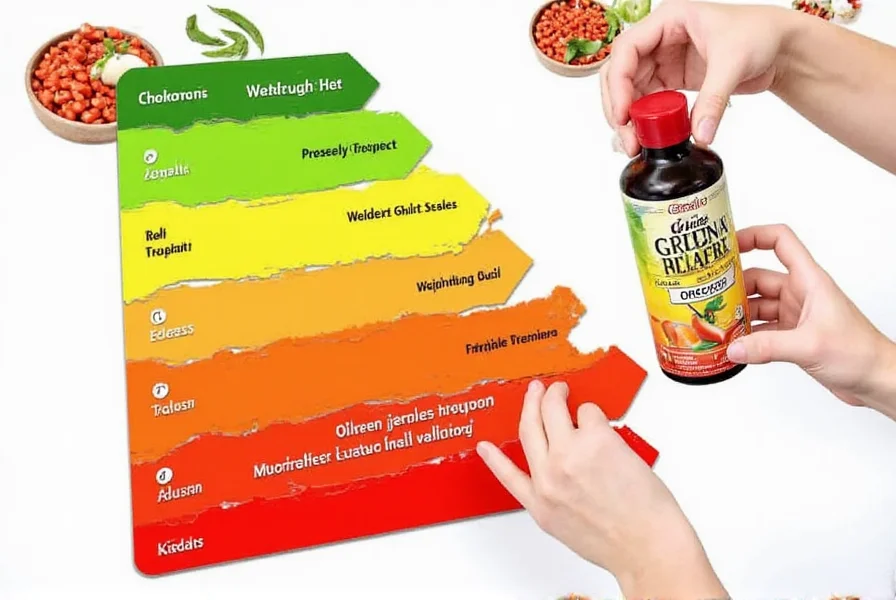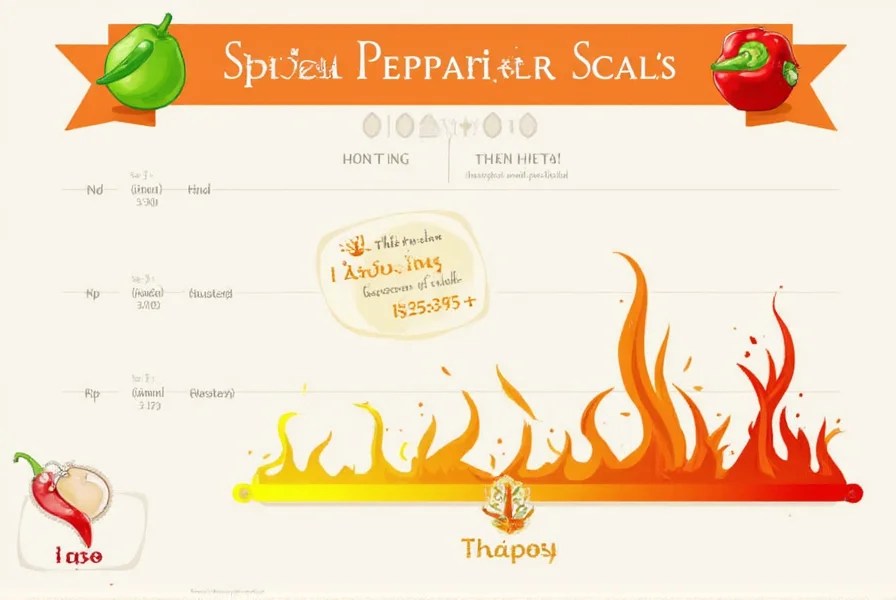Thai peppers, also known as bird's eye chilies, have a Scoville Heat Unit (SHU) range of 50,000 to 100,000. This means they are 10-20 times hotter than jalapeños and significantly hotter than cayenne peppers. Below is a detailed comparison of Thai pepper heat against other common chili peppers.
| Pepper Type | Heat Level (SHU) | Comparison to Thai Pepper |
|---|---|---|
| Bell Pepper | 0 | Thai peppers are over 8,300x hotter |
| Jalapeño | 2,500-8,000 | Thai peppers are 6-40x hotter |
| Serrano | 10,000-23,000 | Thai peppers are 2-10x hotter |
| Cayenne | 30,000-50,000 | Thai peppers are 1.7-2x hotter |
| Thai Bird's Eye Chili | 50,000-100,000 | Reference point |
| Habanero | 100,000-350,000 | Thai peppers are 0.5-1.7x hotter |
| Ghost Pepper | 1,000,000+ | Thai peppers are 10-20x milder |

Scoville Scale Explained
The Scoville scale measures the concentration of capsaicin in peppers, which creates the sensation of heat. Developed by pharmacist Wilbur Scoville in 1912, the scale is measured in Scoville Heat Units (SHU). Modern testing uses high-performance liquid chromatography (HPLC) to determine capsaicin content and convert it to SHU values.
Thai Pepper Heat Details
Thai peppers (Capsicum annuum var. frutescens) typically range from 50,000 to 100,000 SHU, though some varieties can exceed 100,000 SHU. The heat level varies based on:
- Growing conditions: Peppers from Thailand's tropical climate tend to be hotter than those grown elsewhere
- Harvest time: Green peppers (less mature) average 50,000-75,000 SHU, while fully ripe red peppers reach 75,000-100,000+ SHU
- Specific variety: Some Thai pepper strains like "Prik Kee Noo" are consistently hotter than others
Why Small Size Means High Heat
Thai peppers pack intense heat despite their small size because of their high concentration of capsaicin in relation to flesh volume. The capsaicin is primarily concentrated in the placental tissue (white membranes) and seeds, which make up a larger proportion of the pepper's total mass compared to larger varieties. This is why even a small Thai pepper can deliver significant heat.

Thai Pepper Cooking Guide
When using Thai peppers in cooking:
- Wear gloves when handling raw peppers to prevent capsaicin transfer to sensitive areas
- Remove seeds and membranes to reduce heat by up to 80%
- Toast or dry-roast to enhance flavor without increasing heat
- Balance with dairy (coconut milk, yogurt) or fats to neutralize the burn
Safety Guidelines for Handling Thai Peppers
When working with Thai peppers:
- Never touch your eyes or face after handling without washing hands thoroughly
- Use vinegar or alcohol to clean surfaces that have contacted capsaicin
- For skin irritation, apply milk or yogurt (casein protein neutralizes capsaicin)
- Keep children away from raw peppers as they can cause severe irritation
| Feature | Description |
|---|---|
| Appearance | Firm, glossy skin. Avoid soft or wrinkled peppers. Green (less mature, milder) or red (fully mature, hotter) |
| Storage | Refrigerate fresh peppers for up to 2 weeks. Freeze for longer storage (up to 6 months) |
| Dried vs. Fresh | Dried Thai peppers concentrate heat up to 10x. Rehydrate before use for best results |
| Regional Variations | Thai-grown peppers typically hotter than those grown in other countries due to climate conditions |












 浙公网安备
33010002000092号
浙公网安备
33010002000092号 浙B2-20120091-4
浙B2-20120091-4